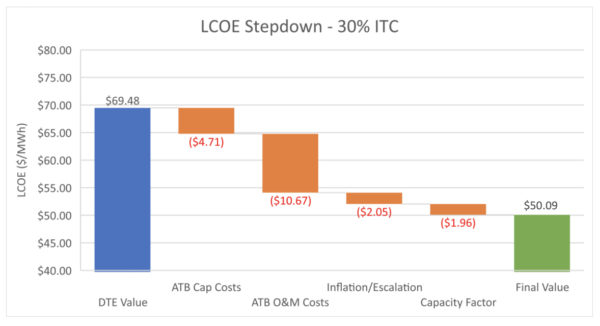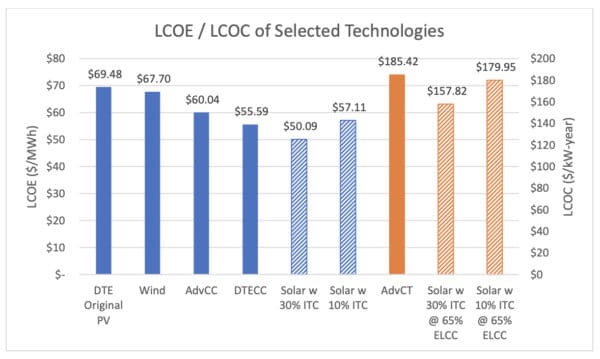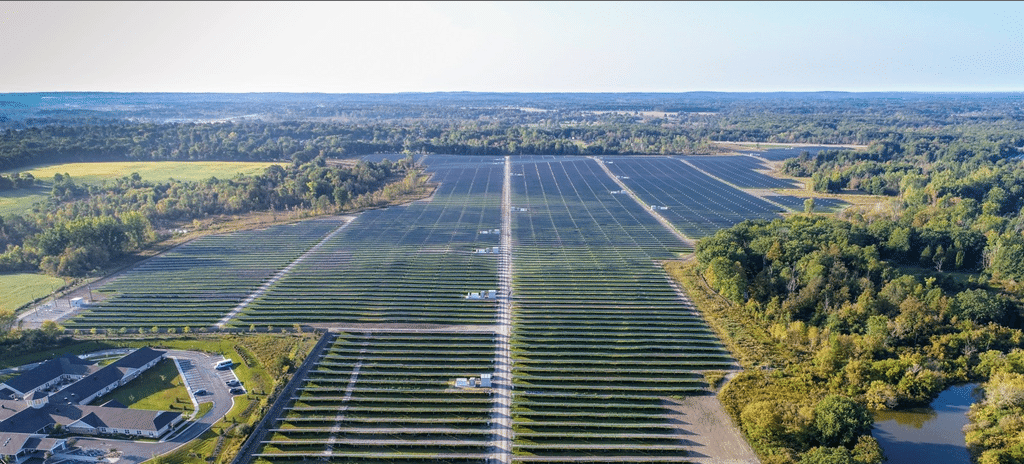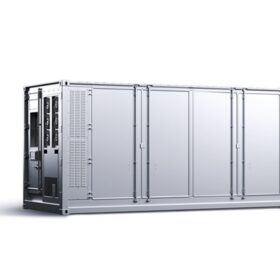The Solar Energy Industries Association (SEIA) has joined state-level battles over utility resource plans, in a big way. And Michigan customers of DTE Energy could benefit to the tune of $100 million, if state regulators pay attention.
SEIA found that DTE hard-coded its preferred resources, instead of letting the model select the optimal mix of resources—essentially thumbing its nose at its own model. Overall, SEIA documented 16 “questionable modeling decisions,” in 224 pages of testimony by SEIA Director of Rate Design Kevin Lucas. DTE’s modeling results are “neither based on nor supported by its own modeling,” Mr. Lucas concluded.
To correct for DTE’s failings, Mr. Lucas compiled updated cost data for solar, which Anna Sommer of Energy Futures Group used to model an alternative plan, using the same Strategist model used by DTE.
That yielded the result that nearly 2 GW of solar “in the near-term years” would save Michigan customers about $100 million through 2040 compared to DTE’s plan, said Mr. Lucas—even before considering replacing aging peaking units with solar plus storage.
The testimony and supporting analysis were sponsored by the Michigan-based Environmental Law and Policy Center (ELPC), alongside SEIA, Vote Solar, the Union of Concerned Scientists, and the Ecology Center.
This chart shows how the team corrected DTE’s levelized cost of energy (LCOE) for solar—which was based on data published in 2017—to reflect the steep declines in solar capital and O&M costs captured in the National Renewable Energy Laboratory’s 2018 Annual Technology Baseline:

With those updated cost values, “near-term solar PV becomes the lowest-cost resource for both energy and capacity needs,” testified Mr. Lucas, as shown in this chart:

Ms. Sommer’s modeling run also reflected use of single-axis tracker systems instead of fixed-tilt systems, gaining the added generation shown here:
![]()
In another key argument, DTE’s proposal to own all renewable assets would “burden its customers with excess costs,” Mr. Lucas testified.
Ms. Sommer noted that ABB, Strategist’s vendor, will soon no longer support the model. She called in her testimony for the replacement model that’s selected to be transparent, so that utilities develop modeling results “that are more robust and lead to better long-term planning.” To achieve transparency, she suggested:
- Make the modeling database readable, without a model license (or offer a read-only copy of the model)
- Provide a well-documented manual available to non-licensees
- Enable third parties to license the model at a reasonable cost, if a license is not provided by the utility.
The Michigan Attorney General sponsored testimony by consultant George Evans that similarly found DTE’s modeling to be “not reasonable and prudent.” Co-sponsoring that testimony were three environmental groups: the Michigan Environmental Council, Natural Resources Defense Council, and the Sierra Club.
Note: This article was updated on November 14, 2019 to reflect a correction, provided by Anna Sommer, to the analysis that SEIA discussed in its testimony.
This content is protected by copyright and may not be reused. If you want to cooperate with us and would like to reuse some of our content, please contact: editors@pv-magazine.com.







Love that folks like Anna Sommer are taking critical looks at these plans and calling for greater transparency and accessibility. Folks interested in these topics may want to track the emerging North American Open Energy Modeling Initiative. The inaugural workshop kicks off in just a few weeks, and showcases open datasets and models for advanced IRP studies that integrate renewables, storage, and other emerging low-carbon technologies. https://wiki.openmod-initiative.org/wiki/Open_Energy_Modelling_Workshop_-_NREL_2019